Home >> Quantum, electron diffraction
diffraction |
||
What is diffraction?
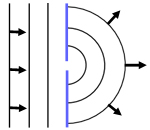
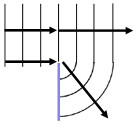
Classical physics gives us a definition of diffraction in terms of waves. It is the phenomenon whereby light or sound waves bend around small obstacles or spread out through small openings.
The Diffraction Grating
A diffraction grating is an array of identical, equidistant, parallel lines on a surface. Gratings are used to produce optical spectra from a single source, parallel beam of light.
There are two types of grating: reflection & transmission
The transmission grating:
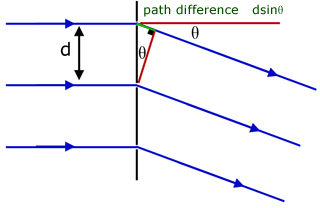
Light rays are diffracted at the edge of each gap in the grating. The waves of light add when the path difference is a whole number of wavelengths. So discrete images at different angles are produced.
![]()
'n' values correspond to:
n=0 no path difference
n=1 one wavelength path difference
n=2 two wavelengths path difference etc.
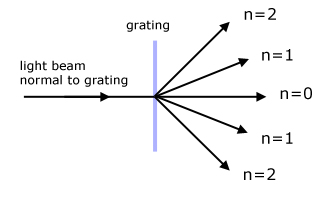
Bragg Diffraction (an example of relection diffraction)
Bragg diffraction occurs when particles or waves with wavelength 'λ' comparable with atomic spacings 'd' , interact with atoms in crystals. At a particular angle θ* waves are diffracted by atoms in adjacent planes and interfere constructively. As with transmission diffraction gratings, a bright image is only produced when the path difference is a whole number of wavelengths.
* the angle the incident wave makes with a plane of atoms
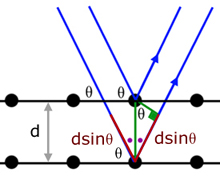
![]()
Practically, the incident waves can be provided by X-rays, electrons or neutrons.
Electron diffraction interference patterns
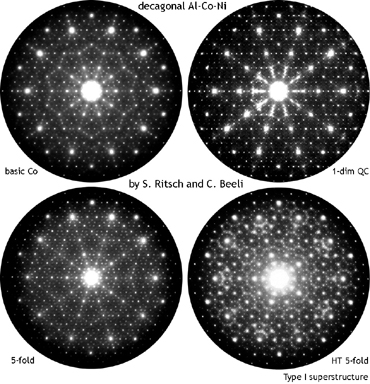
Electron, X-ray and neutron diffraction compared
The most commonly used method is X-ray diffraction.
Summary:
| electron | x-ray | neutron | |
| scattering | by electrostatic repulsion of nucleus | by electron cloud around nucleus | by interaction with the nucleus |
| resolution | moderate | moderate | high |
| penetrating power | poor (requires thin specimens) | good | good |
| matter interaction | high (unreliable results) | none | moderate |
| magnetic effects | no | no | yes (neutrons have their own magnetic field) |
| good for light elements | no | no | yes |
| particular uses | crystals | crystals | fuel rods, archaeological artefacts |
[ About ] [ FAQ ] [ Links ] [ Terms & Conditions ] [ Privacy ] [ Site Map ] [ Contact ]
